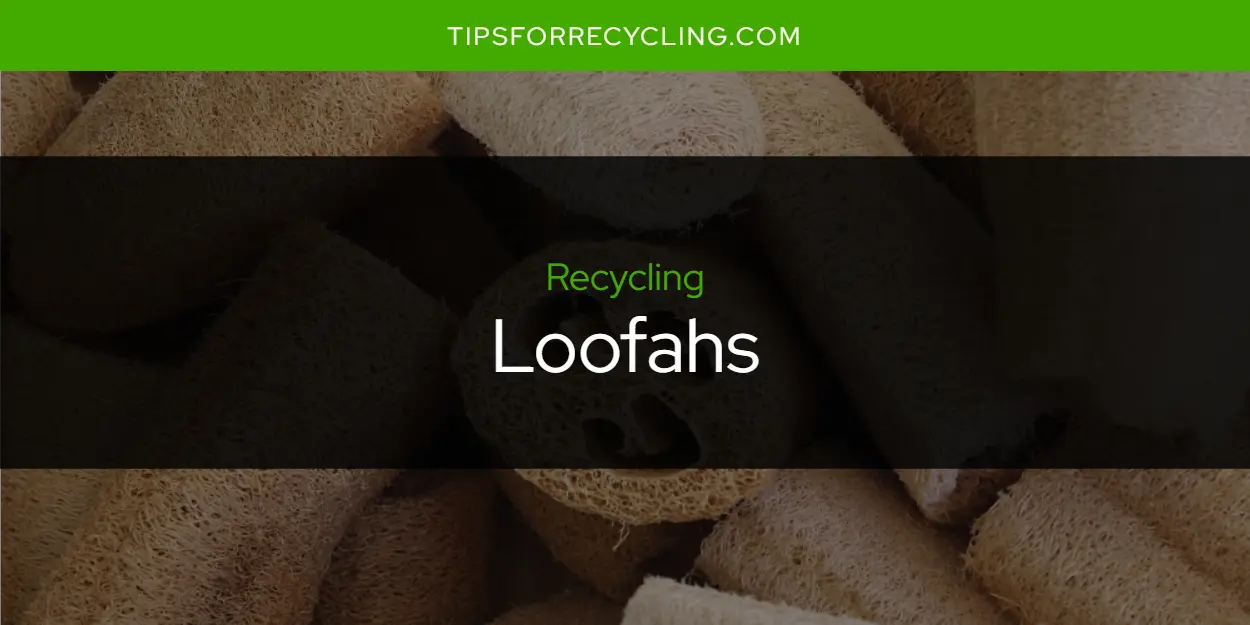Are Loofahs Recyclable?

It can be difficult to determine whether or not loofahs are recyclable, as their composition and structure vary depending on the type of material used in their manufacturing. Generally speaking, most loofahs are made from natural materials such as sea sponge, vegetable fiber, or wood pulp. These materials are biodegradable and can be composted. However, since it is hard to tell which materials have been used, it is best to contact your local waste disposal service for more specific information about what can and cannot be recycled in your area.
See the below map for locations where you can recycle loofahs.
Although it isn't a common practice, some recycling centers may pay you for recycling your loofahs. This payment will depend on the weight of the material and amount being recycled. Some centers may also provide incentives such as discounts or rewards in exchange for recycled items. Contact your local recycling center to see if they offer any such incentives for loofah recycling.
Similarly, see if you can recycle plastic loofahs.
If you don't have access to a recycling center that will accept loofahs, you can donate them to organizations like TerraCycle that focus on upcycling household items into new products. TerraCycle accepts all types of personal care products including loofahs and will often give back points that you can redeem for charity donations or other rewards.
Similarly, see if you can recycle balloons.
Even if a loofah cannot be recycled, there are still ways to properly dispose of them so that they don't end up in landfills or oceans. One way is to cut them up into small pieces so that they can fit into regular trash cans without taking up too much space. Another option is to compost them if you have access to an industrial composter that can handle the size and material of the loofah itself. Lastly, if none of these options are available, then simply throw it away in a designated landfill where it can decompose naturally over time without causing any environmental harm.
Similarly, see if you can recycle roof shingles.
Recycling loofahs has many benefits including reducing waste sent to landfills which helps keep our environment clean and healthy; saving energy by using fewer resources in production; and creating new products from old ones which helps generate jobs in the economy and keeps money circulating locally instead of being sent overseas for production costs. Additionally, with proper disposal techniques like those mentioned before, we can help ensure that these items stay out of our oceans where they could cause serious damage to wildlife habitats and ecosystems.
Similarly, see if you can recycle toothpicks.
Many different products can be made from recycled loofahs such as soap dishes, scrubbing pads for kitchenware cleaning, plant holders for gardening supplies, potpourri sachets for scenting closets or drawers with floral aromas, bath poufs for exfoliating skin during showers/baths etc.. The possibilities are endless when it comes to creating new products out of old ones!
Similarly, see if you can recycle coolers.
Making your own recycled loofah at home is easier than you think! All you need is some scrap fabric (like an old t-shirt), scissors/sewing machine (optional) thread/needle (optional), rope/twine/elastic band (optional), stuffing (cotton balls/polyfill) optional). Cut out two identical rectangles from the fabric (or use a sewing machine) then stitch around three sides leaving one side open – this should create a pocket shape with an opening at one end. Stuff with stuffing then sew closed or wrap securely with twine/rope/elastic band then hang – voila! You’ve just made yourself a new reusable/eco-friendly loofah!